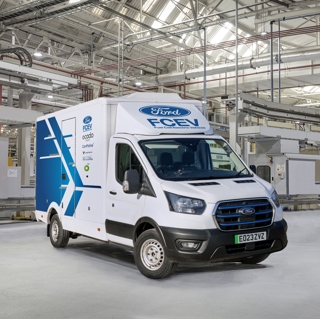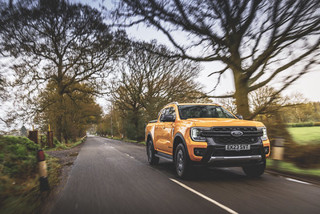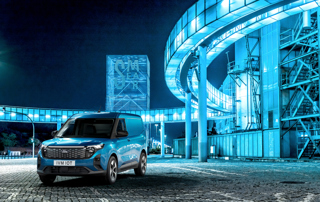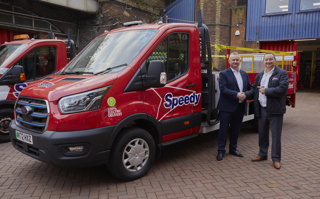Review
There are many reasons why the Ford Transit has been Britain’s biggest selling van since its launch in 1965.
The Transit may not always have led the pack in terms of comfort, safety and technology, but its success has been assured down the years by the fact that whenever the opposition gets one step ahead, the Ford team soon makes sure that the blue oval leaps ahead again PDQ. Ford is not about to relinquish its crown.
So it was with the latest incarnation of this doughty performer, which is just hitting sales rooms as Fleet Van goes to press.
Several opposition manufacturers have beaten Ford to bring out Euro V compliant engines, which invariably mean more power, lower emissions and better fuel economy, but Ford has struck back with a vengeance, upgrading Transit to a level of refinement, economy and reliability never dreamt of even 10 years ago.
Outside, the Transit hasn’t changed much except for the addition of a smart metallic-looking grille at the front to distinguish it from Euro IV models.
But lift the bonnet and a miraculous transformation has taken place.
Ford is now offering just one size engine – at 2.2-litres – to replace the old 2.2 and 2.4 ones and power output goes from 100bhp to 155bhp, meaning that the blistering 200bhp unit on offer at present discontinues.
A new Eco pack has been added, offering stop-start and a switchable speed limiter for the first time and there will also be a full Econetic version in both short and long wheelbases for the first time.
At the same time Ford has upped its anti-corrosion warranty from eight to 12 years and has made the six-speed gearbox standard across the range.
Service levels have also been extended to 20,000 miles, which will mean lower SMR costs.
This equates to combined mpg figures of between 29.4 and 43.5mpg (up from 23.3-39.2 in the current model) and CO2 emissions between 173-252g/km (down from 189-296).
At the launch in Munich, Ford director of commercial vehicles Steve Clary told Fleet Van: “Some 80% of our LCV business is Transit and the front-wheel drive Transit is Ford’s third best seller in both car and van sectors, so you can see how important Transit is to us.
"It is already a great vehicle which has been taken to another level and we have taken a lot of time listening to our customers and giving them exactly what they want.”
Clary said prices would rise as a result of all the new technology now installed, but he pointed out that with the savings in fuel and with increased residual values, buyers would actually save money over the life of the vehicle.
Produced at Ford’s Dagenham engine plant and joint-venture Ford-Otosan facility in Inönü, Turkey, the new diesel engine powers front, rear and all-wheel-drive Transits and comes with a choice of outputs.
Front wheel drive models are available with 100bhp, 125bhp or 140bhp, while the most powerful rear-wheel-drive derivative has 155bhp. Torque increases in the new engines, with the entry-level 100bhp engine delivering 228lb-ft, while the 155bhp has 284lb-ft of pulling power.
The engines now have a higher pressure common-rail direct injection system, variable nozzle turbo and a variable displacement oil pump, together with an all-new exhaust gas recirculation (EGR), and a coated diesel particulate filter (cDPF) unit.
The common-rail injection system works with eight-hole Piezo injectors and an injection pressure of 1,800bar versus the 1,600bar of previous versions.
This set-up offers an increased atomisation of the fuel spray and allows a precise injection process, achieving increased power and torque as well as substantially reducing consumption and emissions.



















Alan brown - 02/01/2016 22:47
I had a test drive of a new shape 2014 transit Luton 125ps with only 8000 miles on the clock from a main ford dealer, and I thought the engine sounded rattley and performance wise it felt as if I was driving with the hand brake on, I dread to think what the performance would of being if I had a tonne pay load in the back, I was glad to get back in to my old 05 plate transit Luton, not impressed, very disappointed